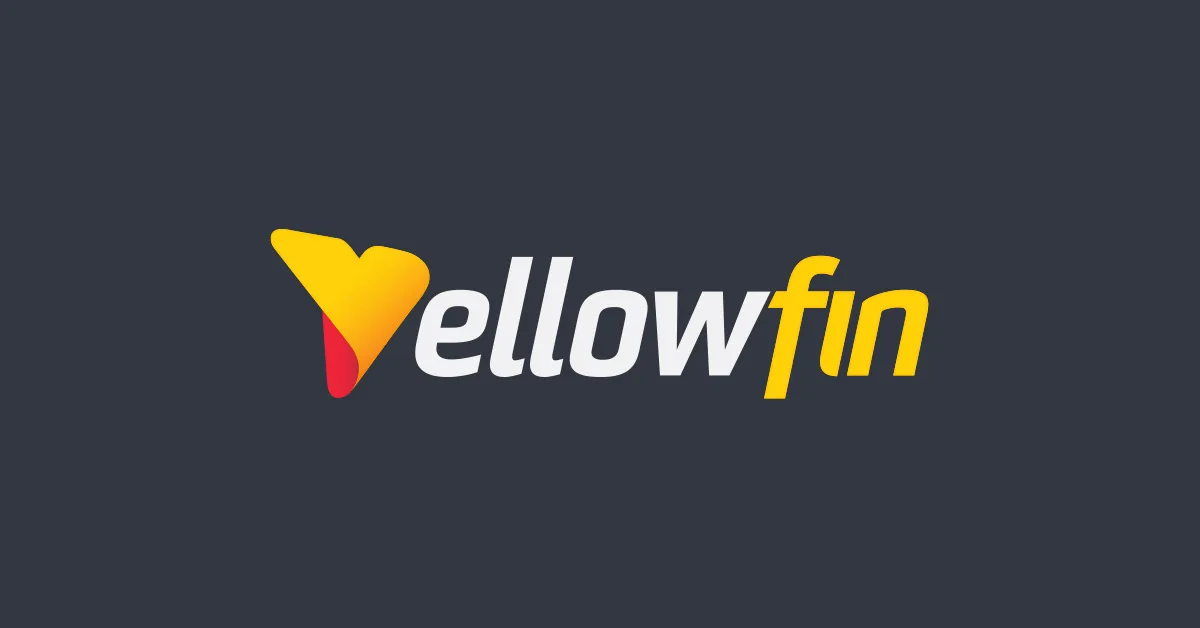Table of Contents
In today’s data-driven world, where information is abundant and often overwhelming, businesses grapple with the critical task of efficiently managing and deriving actionable insights from vast datasets. This intricate dance with data complexity has given rise to a pivotal solution: Business Intelligence (BI) tools. These tools act as the unsung heroes behind the scenes, providing organizations with the necessary arsenal to not only gather and organize data but also to unveil valuable patterns, trends, and correlations.
The landscape of BI is dynamic and diverse, with each tool contributing a unique set of features and functionalities to address the multifaceted needs of businesses. While QuickSight and Looker have etched their names as stalwarts in the BI realm, there exists a myriad of other contenders waiting to be explored. In this comprehensive guide, we embark on a journey through the intricate world of BI tools, unraveling their capabilities and showcasing how they empower organizations to make informed decisions in an era dominated by data.
1. QuickSight: Amazon’s Cloud-Powered Analytics

Overview: QuickSight, part of the Amazon Web Services (AWS) ecosystem, is a cloud-powered business intelligence tool designed for easy and fast data analysis.
Key Features:
- Pay-per-Session Pricing: QuickSight offers a unique pricing model where you pay only for the number of user sessions, making it cost-effective for organizations of all sizes.
- Integration with AWS Services: Being part of AWS, QuickSight seamlessly integrates with various cloud services, allowing users to analyze data directly from data sources like Amazon Redshift, RDS, and more.
- Machine Learning Insights: QuickSight incorporates machine learning to automatically discover relevant insights from your data.
Use Cases: QuickSight is ideal for organizations heavily invested in the AWS ecosystem, offering a scalable and cost-effective solution for cloud-powered analytics.
Users: Siemens Gamesa, GE Healthcare, Deloitte
2. Looker: A Modern Data Platform for Enterprises

Overview: Looker, recently acquired by Google Cloud, is a modern data platform that provides data exploration and business intelligence capabilities.
Key Features:
- LookML Language: Looker uses LookML, a modeling language for describing dimensions, metrics, and calculations. This allows for easy collaboration between technical and non-technical users.
- Embedding and Customization: Looker allows organizations to embed dashboards and reports into other applications, offering a seamless user experience.
- Data-Driven Actions: Users can take data-driven actions directly from Looker, enhancing the workflow and decision-making process.
Use Cases: Looker is well-suited for enterprises looking for a modern and flexible data platform. Its emphasis on collaboration, embedding capabilities, and data-driven actions sets it apart.
Users: Spotify, BuzzFeed, HubSpot
3. Tableau: Unleashing the Power of Visualization

Overview: Tableau is a household name in the BI realm, known for its robust data visualization capabilities. The platform allows users to connect to diverse data sources, create interactive dashboards, and share insights effortlessly.
Key Features:
- Drag-and-Drop Interface: Tableau’s intuitive drag-and-drop interface makes it accessible to users with varying levels of technical expertise.
- Connectivity: It seamlessly connects to a wide array of data sources, ranging from spreadsheets to cloud databases.
- Community and Collaboration: Tableau’s active user community facilitates knowledge sharing, and the platform enables collaboration on data analysis projects.
Use Cases: Tableau is particularly powerful for organizations seeking dynamic and visually compelling ways to present data. Whether you’re analyzing sales trends, customer behavior, or operational metrics, Tableau’s visualization tools bring your data to life.
Users: Netflix, Airbnb, Charles Schwab
4. Microsoft Power BI: Integrating with the Microsoft Ecosystem

Overview: Microsoft Power BI is a business analytics tool that integrates seamlessly with the Microsoft ecosystem. It empowers users to analyze and visualize data, share insights, and make data-driven decisions.
Key Features:
- Powerful Integration: Power BI integrates with other Microsoft tools like Excel, Azure, and SQL Server, providing a cohesive analytics environment.
- Natural Language Query: Users can ask questions about their data using natural language, making it accessible to a broader audience.
- Custom Visualizations: The platform supports a wide range of custom visualizations, allowing users to tailor reports to their specific needs.
Use Cases: Power BI is an excellent choice for organizations heavily invested in the Microsoft ecosystem. Its seamless integration with familiar tools enhances user adoption and streamlines the analytics process.
Users: Adobe, Walmart, Toyota
5. IBM Cognos Analytics: Integration with Diverse Data Sources
Overview: IBM Cognos Analytics is a comprehensive business intelligence and analytics platform developed by IBM. It enables organizations to access, analyze, and visualize data to make informed business decisions.
Key Features:
- Multifaceted Reporting and Dashboarding: Cognos Analytics provides a robust reporting and dashboarding environment, allowing users to create interactive and visually compelling reports and dashboards.
- AI and Machine Learning Capabilities: Similar to QuickSight, Cognos Analytics incorporates AI and machine learning features for automated insights, trend analysis, and pattern recognition.
- Scalability and Performance: IBM Cognos Analytics is designed to scale with the needs of an organization, providing high-performance analytics even with large and complex datasets.
Use Cases: IBM Cognos Analytics is suitable for a variety of industries and organizations looking for a robust and scalable business intelligence solution. It is used by businesses across sectors such as finance, healthcare, manufacturing, and more.
Users: While specific user information may not be readily available, IBM Cognos Analytics is widely adopted by enterprises globally. Organizations of varying sizes and industries leverage their capabilities for data-driven decision-making.
6. Domo: Cloud-Based BI for Comprehensive Analysis

Overview: Domo takes a cloud-first approach to business intelligence, providing a platform for real-time data visualization and collaboration.
Key Features:
- Cloud-Based Architecture: Domo’s cloud-based architecture enables users to access and analyze data from anywhere, fostering collaboration in real-time.
- Data Integration: It brings together data from various sources, helping organizations create a unified view for comprehensive analysis.
- Alerts and Notifications: Domo allows users to set up alerts for key metrics, ensuring that stakeholders are informed of critical changes in real-time.
Use Cases: For organizations looking for a flexible and scalable BI solution with a focus on real-time collaboration and comprehensive data analysis, Domo is a strong contender.
Users: Mastercard, National Geographic, The Honest Company
7. Sisense: User-Friendly Interface with Powerful Capabilities

Overview: Sisense is recognized for its user-friendly interface and powerful data visualization capabilities, catering to both technical and non-technical users. With Sisense pricing structured to accommodate businesses of all sizes, from startups to enterprises, it offers scalable solutions that grow with your organization’s needs.
Key Features:
- Single-Stack Solution: Sisense offers a single-stack solution for preparing, analyzing, and visualizing complex datasets, simplifying the BI process.
- AI-Powered Insights: The platform leverages AI to provide intelligent insights, uncovering patterns and trends in the data.
- Embeddable Analytics: Sisense allows organizations to embed analytics seamlessly into other applications, extending its use beyond traditional BI scenarios.
Use Cases: Sisense is an ideal choice for organizations seeking a balance between ease of use and advanced analytical capabilities. Its AI-driven insights and embeddable analytics make it versatile for various business needs.
Users: Sony, ESPN, GitLab, Adobe Spark, Flexport, New Relic
8. Mode Analytics: Collaboration at the Core

Overview: Mode Analytics focuses on collaborative data analysis, providing a platform for teams to work together on data exploration and visualization.
Key Features:
- SQL-Based Querying: Mode Analytics uses SQL as its query language, making it a powerful tool for users familiar with database querying.
- Interactive Charts: The platform supports the creation of interactive charts and dashboards, enhancing the exploration of data.
- Version Control: Mode Analytics includes version control features, enabling teams to track changes and collaborate seamlessly.
Use Cases: For organizations with a focus on collaborative data analysis and exploration, especially those where SQL proficiency is prevalent, Mode Analytics offers a compelling solution.
Users: Lyft, Revolut, Shopify
9. Qlik: Associative Data Model for Discovery

Overview: Qlik View and Qlik Sense are data visualization and discovery platforms known for their associative data model, allowing users to explore data in a free-form manner.
Key Features:
- Associative Data Model: Qlik’s associative data model allows users to make discoveries in their data by exploring associations between different data points.
- Self-Service Analytics: Both QlikView and Qlik Sense emphasize self-service analytics, empowering users to explore and visualize data without extensive IT support.
- Mobile Accessibility: The platforms are designed with mobile accessibility in mind, ensuring that users can access insights on the go.
Use Cases: QlikView and Qlik Sense are well-suited for organizations that prioritize a free-form approach to data exploration and discovery. Their associative data model sets them apart in the BI landscape.
Users: Qualcomm, Canon, Chobani
10. Yellowfin BI: End-to-End Business Intelligence Platform

Overview: Yellowfin BI offers an end-to-end business intelligence platform, providing reporting, analytics, and data visualization capabilities.
Key Features:
- Collaboration and Storytelling: Yellowfin BI emphasizes collaboration and storytelling, allowing users to share insights and narratives derived from their data.
- Predictive Analytics: The platform includes predictive analytics features, enabling organizations to leverage machine learning for forecasting and trend analysis.
- Integration: Yellowfin BI supports integration with various data sources, ensuring a comprehensive view of organizational data.
Use Cases: For organizations seeking a holistic BI solution with a focus on collaboration, storytelling, and predictive analytics, Yellowfin BI is a strong contender.
Users: Honda, Flight Centre, Hertz
Conclusion
As organizations continue to navigate the complexities of the modern business landscape, choosing the right business intelligence tool is crucial for unlocking the full potential of their data. Whether it’s the cloud-powered analytics of QuickSight, the collaborative features of Mode Analytics, or the associativity of QlikView and Qlik Sense, each tool brings its unique strengths to the table. Looker and QuickSight, with their modern approach and integration capabilities, further contribute to the diverse landscape of business intelligence tools. The key lies in understanding your organization’s specific needs and selecting a tool that aligns with your goals, technology stack, and user preferences.
The world of BI is evolving, and staying informed about the latest advancements is essential for making strategic decisions that drive business success. Looking ahead, as businesses step into the future, the synergy between organizational goals and the evolving BI landscape will be pivotal in shaping success stories across industries. The dynamic nature of BI tools necessitates a continuous adaptation mindset. Success isn’t merely about choosing the right tool for today; it’s about preparing for the challenges and opportunities that tomorrow may bring.
As the BI landscape evolves, organizations must not only stay abreast of emerging technologies and features but also foster a culture of continuous learning and adaptability. The strategic integration of BI tools becomes a journey of growth and evolution, aligning not only with the present needs of the organization but also positioning it strategically for a future where data-driven insights will play an increasingly central role in shaping business strategies.





